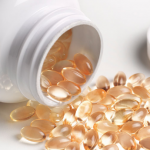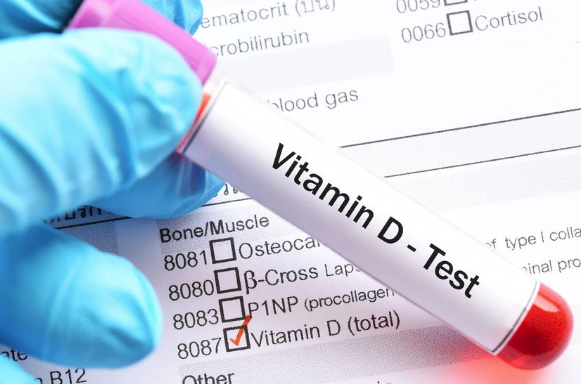Welcome back! Last week, we talked about frosting all your cupcakes! Yep, you read that right. If you missed that blog and would like to catch up, click HERE.
This week, let’s talk about vitamin D. Are you low? How can you tell? Does it really matter? Let’s chat…

Years ago, I was experiencing severe pain in my muscles and bones. The ER was becoming a regular stop for me on the weekends. One of my doctors, a DO (Osteopathic Doctor), ran a blood test for vitamin D. On a scale where 30 is the lowest one should be, I was a whopping 9. Way too low.
She prescribed Vitamin D3, 50 thousand IU’s (international units), once a week for 10 weeks. Even at that high of a dose, I was still not in range. We repeated and I was close, so then she started me on 2,000 IU’s a day. I’ve not needed more since, and the extreme pain subsided.
In talking with many of my friends who have been diagnosed with Fibromyalgia, they described what I had been feeling; muscle aches, flu-like symptoms. Each one of them had their vitamin D levels checked after hearing my story, and while it didn’t resolve all of their symptoms, it decreased the all-over body aches by a good measure. Anyone who lives with Fibromyalgia will tell you that even a small win is still a win. They’ll take it.
Is Vitamin D important for our bodies? YES.
An article from Yale Medicine states: “Your body needs vitamin D. Its main job is to help the body absorb calcium from the intestines. This calcium is necessary to help “mineralize the skeleton” over the course of your lifetime and is a critical mineral for forming the hardened bone that keeps you strong and healthy”.
Can Vitamin D also help my psoriasis? YES, says Dr. Suzanne Olbricht, an associate professor of dermatology at Harvard Medical School.
Scientists in Italy found that people with psoriasis also suffer from vitamin D deficiency.
“We speculated that vitamin D might be low in psoriasis patients, but this is the first good study that substantiates it,” says Dr. Suzanne Olbricht, an associate professor of dermatology at Harvard Medical School“. Vitamin D deficiency was common in people with chronic plaque psoriasis. Dr. Olbricht goes on to say, “Topical vitamin D preparations applied directly to psoriasis plaques can improve and suppress the plaque.”
If you are low on vitamin D, some of the symptoms will be as follows (according to Harvard, The School of Public Health)
“Osteomalacia: A condition in adults of weak and softened bones that can be reversed with supplementation. This is different than osteoporosis, in which the bones are porous and brittle and the condition is irreversible.
“When osteomalacia is in its early stages, you might not have symptoms, although signs of osteomalacia might show on an X-ray or other diagnostic tests. As osteomalacia progresses, you might develop bone pain and muscle weakness.
“The dull, aching pain associated with osteomalacia most commonly affects the lower back, pelvis, hips, legs, and ribs. The pain might be worse at night or when you put pressure on the bones. The pain is rarely relieved completely by rest.
“Decreased muscle tone and leg weakness can cause a waddling gait and make walking slower and more difficult.
“Rickets: A condition in infants and children of soft bones and skeletal deformities caused by failure of bone tissue to harden”.
Signs and symptoms of rickets can include:
- Delayed growth
- Delayed motor skills
- Pain in the spine, pelvis, and legs
- Muscle weakness
Because rickets softens the areas of growing tissue at the ends of a child’s bones (growth plates), it can cause skeletal deformities such as:
- Bowed legs or knock knees
- Thickened wrists and ankles
- Breastbone projection
Risk Factors:
Factors that can increase a person’s risk of rickets include:
- Dark skin. Dark skin has more of the pigment melanin, which lowers the skin’s ability to produce vitamin D from sunlight.
- Mother’s vitamin D deficiency during pregnancy. A baby born to a mother with severe vitamin D deficiency can be born with signs of rickets or develop them within a few months after birth.
- Northern latitudes. Children who live in geographical locations where there is less sunshine are at higher risk of rickets.
- Premature birth. Babies born before their due dates tend to have lower levels of vitamin D because they had less time to receive the vitamin from their mothers in the womb.
- Medications. Certain types of anti-seizure medications and antiretroviral medications, used to treat HIV infections, appear to interfere with the body’s ability to use vitamin D.
- Exclusive breast-feeding. Breast milk doesn’t contain enough vitamin D to prevent rickets. Babies who are exclusively breastfed should receive vitamin D drops.

Unfortunately, Toxicity can also occur if you take TOO MUCH vitamin D, so beware.
Vitamin D toxicity most often occurs from taking supplements. The low amounts of the vitamin found in food are unlikely to reach a toxic level, and a high amount of sun exposure does not lead to toxicity because excess heat on the skin prevents D3 from forming.
It is advised to not take daily vitamin D supplements containing more than 4,000 IU unless monitored under the supervision of your doctor.
Symptoms of toxicity:
- Anorexia
- Weight loss
- Irregular heartbeat
- Hardening of blood vessels and tissues due to increased blood levels of calcium, potentially leading to damage of the heart and kidneys.
If our body needs vitamin D so badly, then how can we make sure we are getting enough?
I turned to Yale Medicine for these answers. They had some good clear advice for us:
“The short answer is from food, the sun or supplements.

“There are two main kinds of vitamin D—vitamin D2 and vitamin D3—which you can get from (and occur naturally in) certain foods like salmon, tuna, mackerel, and beef liver and egg yolks. But because we don’t consume large enough quantities of these foods, they can’t be our sole source of vitamin D. That’s why foods like milk, cereal, and some orange juices are vitamin D2- and D3-fortified. (Since the 1930s, manufacturers have voluntarily enriched these foods with vitamin D to help reduce the incidence of nutritional rickets).
“When exposed to the sun, your skin can manufacture its own vitamin D. ‘We each have vitamin D receptor cells that, through a chain of reactions starting with conversion of cholesterol in the skin, produce vitamin D3 when they’re exposed to ultraviolet B (UVB) from the sun,’ says Yale Medicine dermatologist David J. Leffell, MD, chief of Dermatologic Surgery.
“Another avenue to get vitamin D is by taking supplements. These come in both pill and liquid forms“.
The last thing I want to address in this week’s blog is absorption issues. What if you are taking the prescription/supplements, eating the right foods, and getting sunlight, but are still low? Absorption may be the issue. Let’s see what the Mayo Clinic has to say about absorption:
“Some people are born with or develop medical conditions that affect the way their bodies absorb vitamin D. Some examples include:
- Celiac disease
- Inflammatory bowel disease
- Cystic fibrosis
- Kidney problems
Better You reminds us about absorption issues around Vitamin D: “Vitamins and minerals all work in combination and rely on each other to be fully effective.
“Taking magnesium helps your body to absorb and use minerals such as calcium, phosphorus and potassium, and vitamins like vitamin D.
“If you take vitamin D supplements, they won’t work properly in strengthening your bones unless the concentrations of boron, magnesium, and zinc, and vitamins K and A, are at the correct levels.
When shopping for supplements, always look for ones that offer the daily recommended allowance (RDA) you need for your age bracket: For most healthy people, it’s 600 IU per day, but for people over age 70 who need a little more—it’s about 800 IU. That’s because, as people age (women after menopause, in particular), they less efficiently synthesize vitamin D and absorb calcium. Babies should be getting smaller amounts in their first year of life, between 200 and 400 IU.
So there you have it, dear readers…I hope this helps someone out there who may be suffering and is looking for an answer.
Editors note: This blog is not a replacement for sound medical advice, and many diseases, disorders, and syndromes have symptoms that overlap. Only a qualified medical professional can diagnose you. That said, if you think this blog may be helpful to others, please hit the Facebook Icon and share it on your personal pages. Thank you for reading us, we really do appreciate you!

Reposted from another page:
John P. Gambee
What a great share!
Reposted from another page:
Cindy Adams
Thank you for sharing. I do have Fibromyalgia and Arthritis and migraines. I will try taking some. Thank you because somedays it hurts to do anything.
Reposted from another page
Robyn McLeroy:
OMGosh thank you, such truth in this article! I suffer from RA, Fibromyaliga, migraines… been ‘Living’ outside loving the ‘natural vit D’ but I didn’t know about the absorption issues etc that this article describes! Great share!!
Reposted from another page:
Annette Stacey:
Vitamin D deficiency was the cause of a whole host of problems I was having. Yes, get those levels checked.